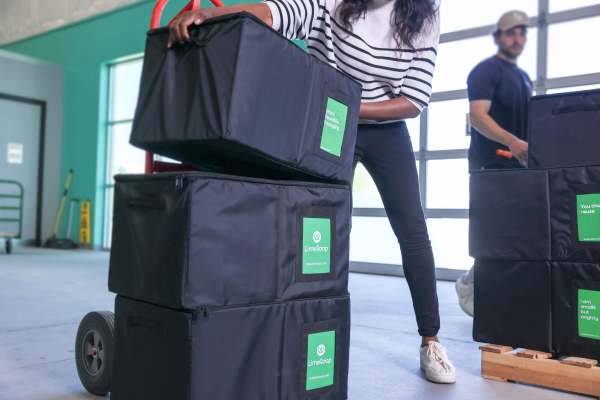The era of e-commerce has brought choice, convenience, and cardboard boxes. Oh, so many cardboard boxes.
“Everything goes in packaging these days,” said Chantal Emmanuel, co-founder and CTO of LimeLoop, which is a participant in the TechCrunch 2023 Battlefield 200 startup competition.
For many consumers, the sight of so much waste can be distressing. And for retailers and fulfillment companies, single-use packing is a hit to both their bottom line and their sustainability scores.
Emmanuel and Ashley Etling, LimeLoop’s other co-founder and the company’s CEO, had worked together previously at an industrial design firm that shipped samples in reusable packaging. Years later, Etling stumbled upon one of those packets in a cardboard box of all things.
At the same time, e-commerce had been taking off in the U.S. “Both of us shop online more than we’d like to admit,” Emmanuel said, and both had a surplus of single-use cardboard boxes on hand. Etling called Emmanuel, and the pair started brainstorming what a company built around reusable packaging might look like.
The answer turned out to be more than just reusable mailers. Hardware and software ended up being an essential part of the business model, allowing LimeLoop to track their mailers as they made their way from origin to destination. That’s helpful not just for e-commerce, but also for hospital systems, for example, that might need to ensure delivery at a certain time.
LimeLoop’s mailers are made from upcycled plastics and contain LoRaWAN modules that allow them to be tracked using the Helium Network and Amazon’s Sidewalk network. “That’s what gives us real-time data throughout most of the U.S. and the world,” Emmanuel said.
The startup has two primary types of packages: those that travel from businesses to consumers and those that ply fulfillment routes within or between companies. The latter are larger totes that can hold around 40 pounds and have a life of about 50 trips. The consumer-facing packages are smaller and can survive at least 100 trips. In many cases, Emmanuel said, the packaging is still structurally sound, but it’s too marked up to make it useful.
As a result, the carbon footprint of the mailers is about 90% lower than that of cardboard, even when factoring in return shipping. On the consumer side, that happens via the U.S. Postal Service, which picks up the mailers when the mail carrier makes their usual rounds. On the B2B side, the totes can be collapsed and packed in another tote, 10 at a time, for the return trip.
The company has a number of customers, including sustainable clothing retailer Toad&Co. and outdoor gear company Topo Designs.
While much of the emphasis is on the packages themselves, Emmanuel said that the intelligence of their platform is what’s made the circularity of their system possible. “We found it to be really vital for what we’re doing because if you don’t know where the packages are, you’re not keeping them in circulation; you might as well be using cardboard,” she said.
